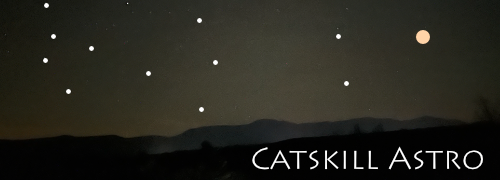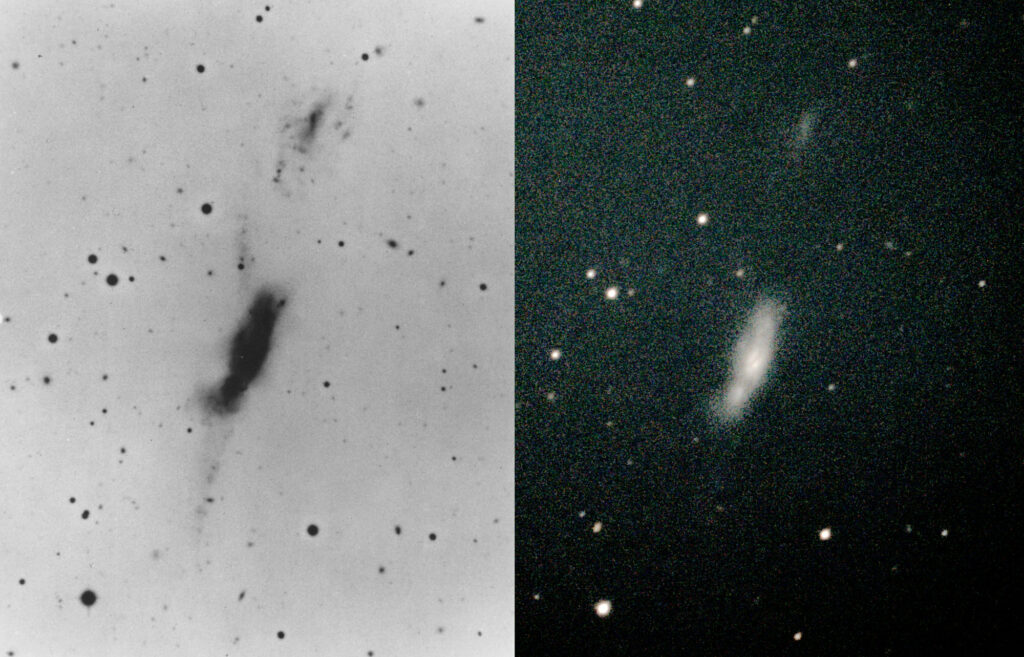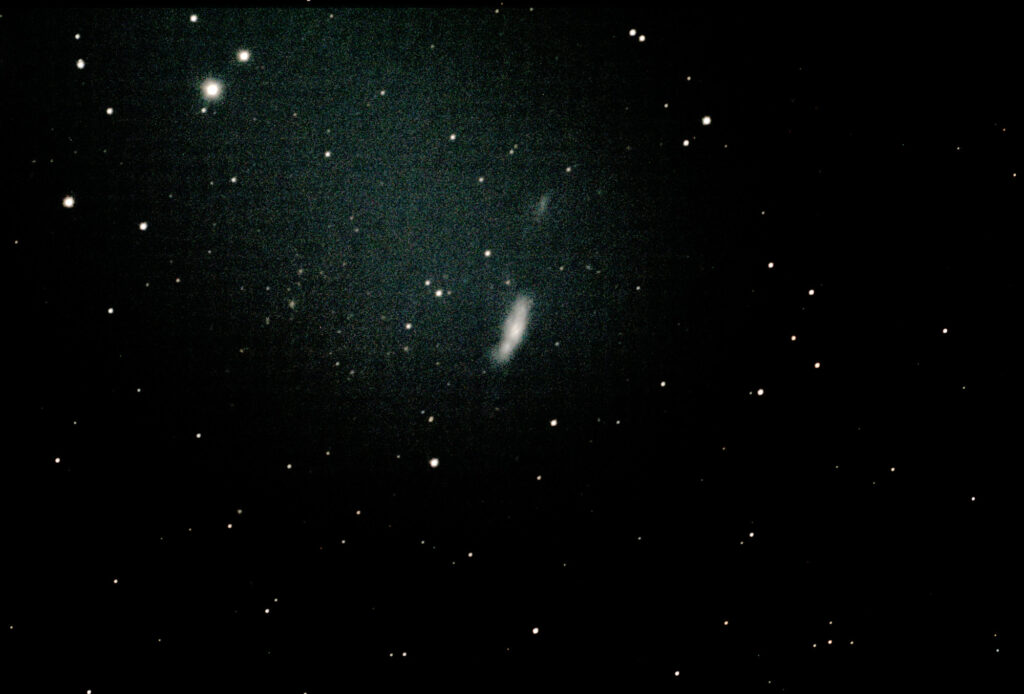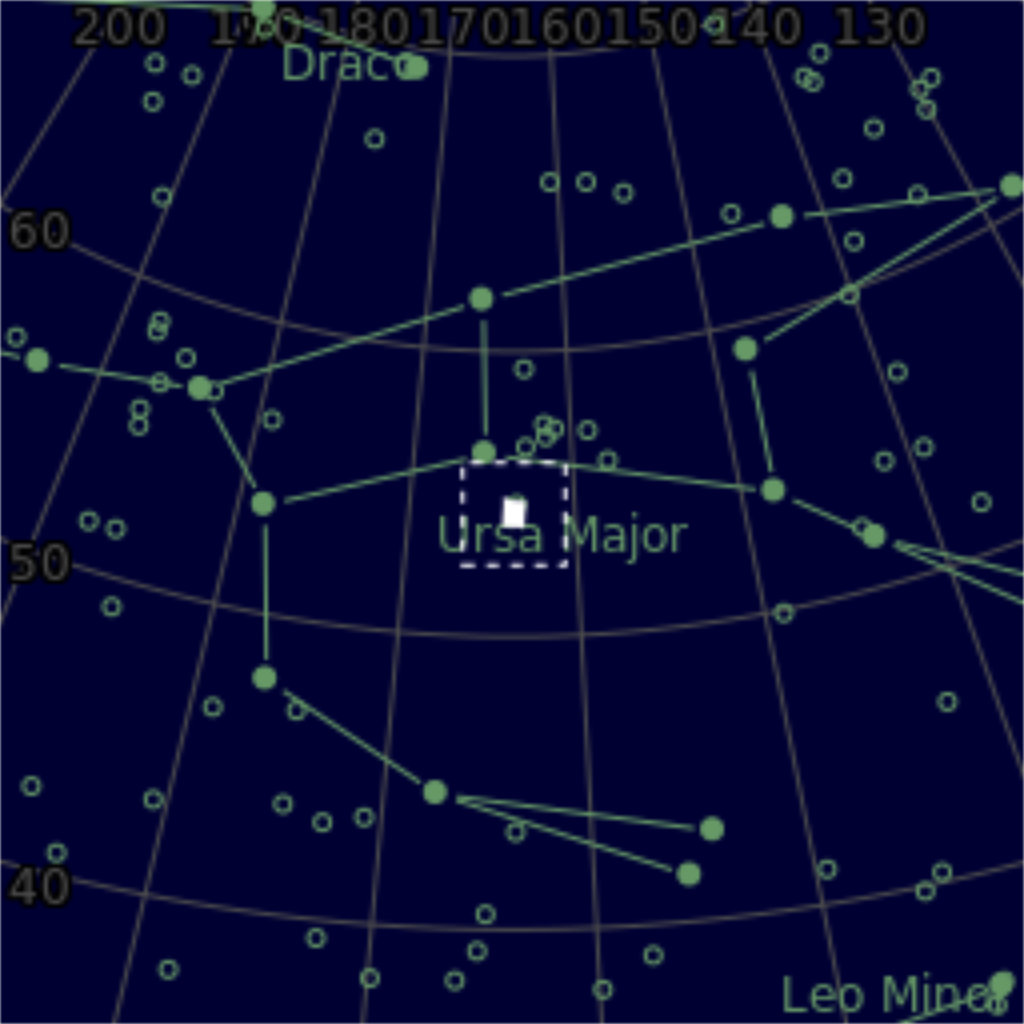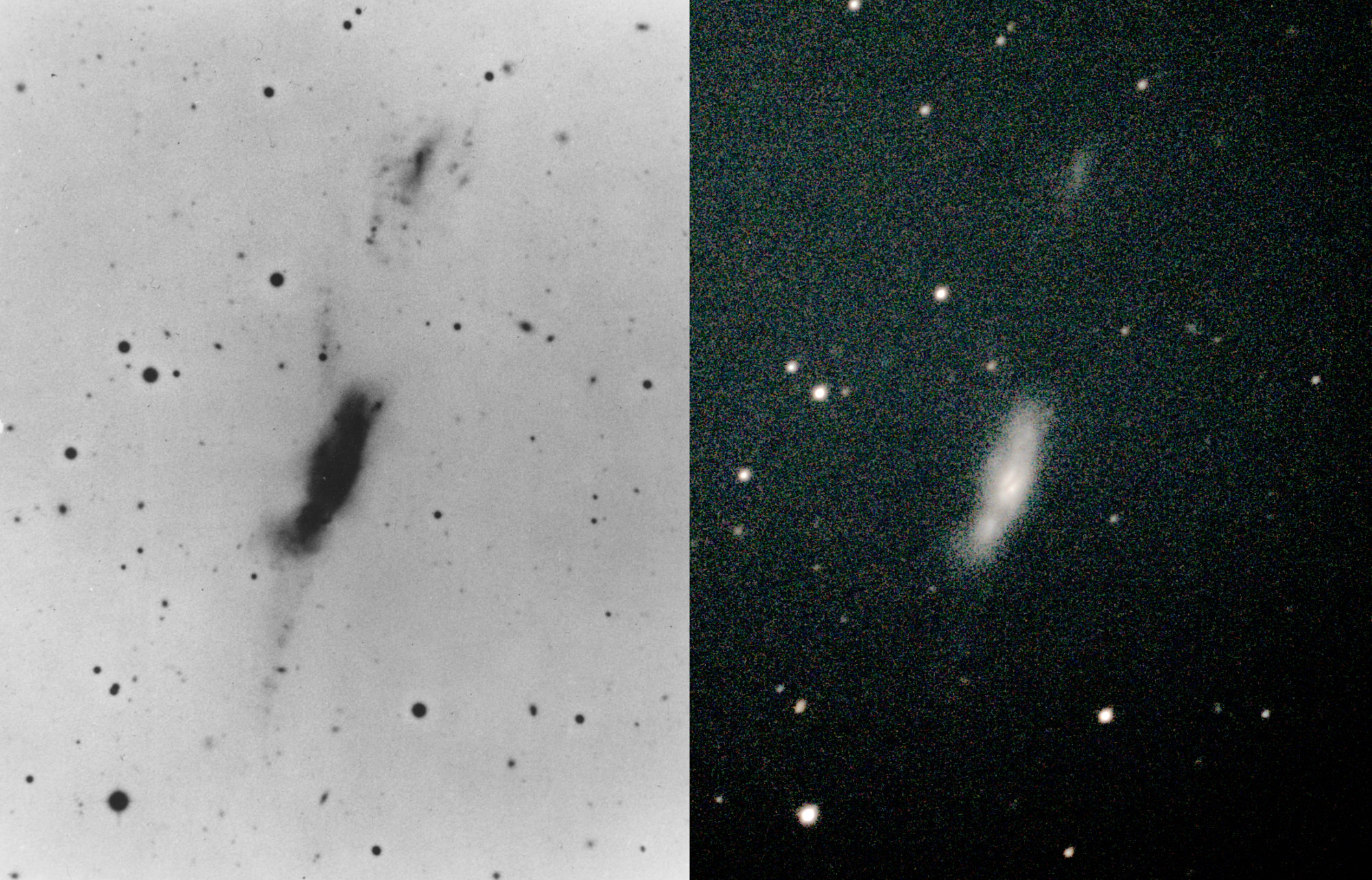| Description | I struggled with Arp 205, because it's hard to know why this target is categorized as containing "material ejected from nuclei". What does that look like? Arp left no comments that might offer insight. Technically, it's doubly tough because you have a mix of high and low surface brightness objects: I tried my usual grayscale and inversion tricks here. Despite the normal infirmities of OSC imaging, color helps more than you'd expect, and I couldn't improve on my original color captures. Describing the bright object from the bottom left to upper right (NW to SE) NGC 3448 (discovered by William Herschel in 1789.) looks more like two galaxies, not one. There are clearly two galactic nuclei here associated with spiral disks. The first disc is foreshortened, at a different plane from the second, enlongated., Then there's a 3rd spiral disk, tucked in where the brightness ends, at yet another angle, a tiny nucleus, and despite low brightness, showing up as a gray disk against the green/black background. Finally there's the smudge towards the SW corner, disconnected from the other three. I can't see much of it, but what I can see has the distinctive shape of a S barred spiral center. From a modern perspective you know that it's UGC 6016, and a cataloged 17th magnitude galaxy. Arp, of course, didn't have that advantage, but his plate shows the galaxy pretty clearly, even if it's surrounded by other junk, That leaves only the tail NE of NGC 3448 (lower left), which is shown very clearly in Arp's plate, and which my image only hints at. Could that be ."ejected material"? But how is that different from a narrow filament? And why does that trump 4 galaxies interacting together as a reason for peculiarity? |

